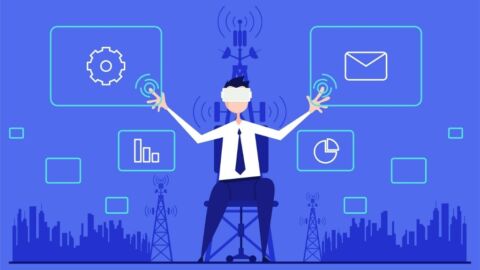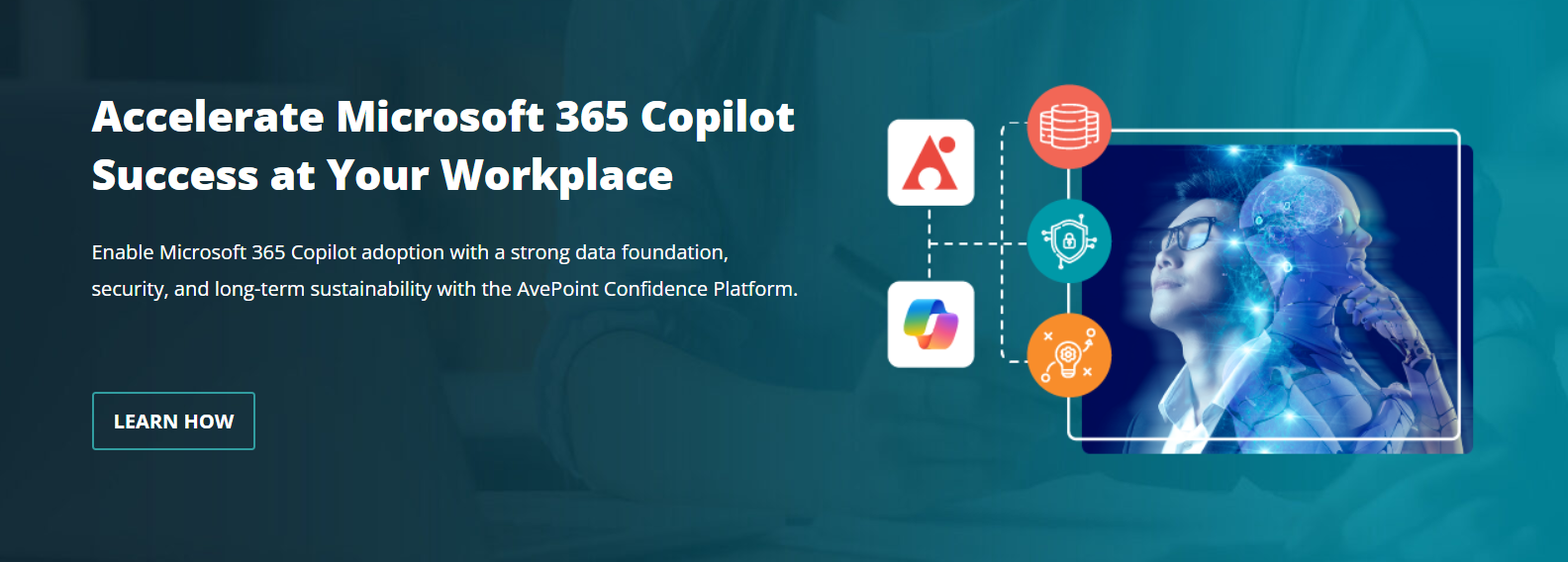Read our other Microsoft Ignite recaps below:
- What You Need to Know About Privacy Management for Microsoft 365
- How to Protect Sensitive Microsoft 365 Data With Data Loss Prevention
- 4 New Microsoft 365 Hybrid Work Features on the Horizon
- 6 Things You Need to Know About Microsoft Teams Connect (Shared Channels)
Microsoft has continuously been at the forefront of pushing cloud-based technologies, and as the pandemic has continued to change the workplace they’ve only been more aggressive about their support for hybrid work environments. This mindset was at the heart of Satya Nadella’s keynote during his fall Ignite session. Satya started by giving observations on current workplace trends before diving into how Microsoft is planning to cater to them with innovations in AI and the metaverse.
Trend 1: The Shift to Hybrid Work
According to the Microsoft Work Trend Index, 70% of workers want the flexible work options spurred by the pandemic to continue, while 65% want more in-person work time. Satya stressed that productivity and flexibility are not mutually exclusive, and that organizations need to empower employees to ensure their own wellbeing without sacrificing career advancement.
Trend 2: A Hyperconnected Business
When it comes to customers, having omnichannel reach and service will be immensely important. Satya explained that there needs to be hypoconnectivity between businesses and consumers as well as between businesses (where data flows freely to tackle the challenges of supply and demand). Going forward, he envisions that every business process will be collaborative, powered by data and AI, and will bridge the digital and physical worlds.
Trend 3: Every Business is Becoming a Digital Business
Building your own digital capability is of increasing importance. This requires great multi-cloud infrastructure and tooling to support teams across your organization. Application models are transforming to run on the edge with new ambient intelligent capabilities. Satya predicts that every organization will need a more distributed, intelligent, autonomous computing fabric, one that can be used to build, manage, and deploy applications anywhere.
Trend 4: Everything Needs to be Protected with End-to-End Security
Cybersecurity is the number one risk facing every business going forward. The amount of change that every organization had to go through as every business process became remote will only increase. According to Cybersecurity Ventures, cybercrime is costing economies more than 6 trillion dollars each year and is only expected to grow in the next several years. Comprehensive tools across identity, security, compliance, privacy, and management are needed to combat this.
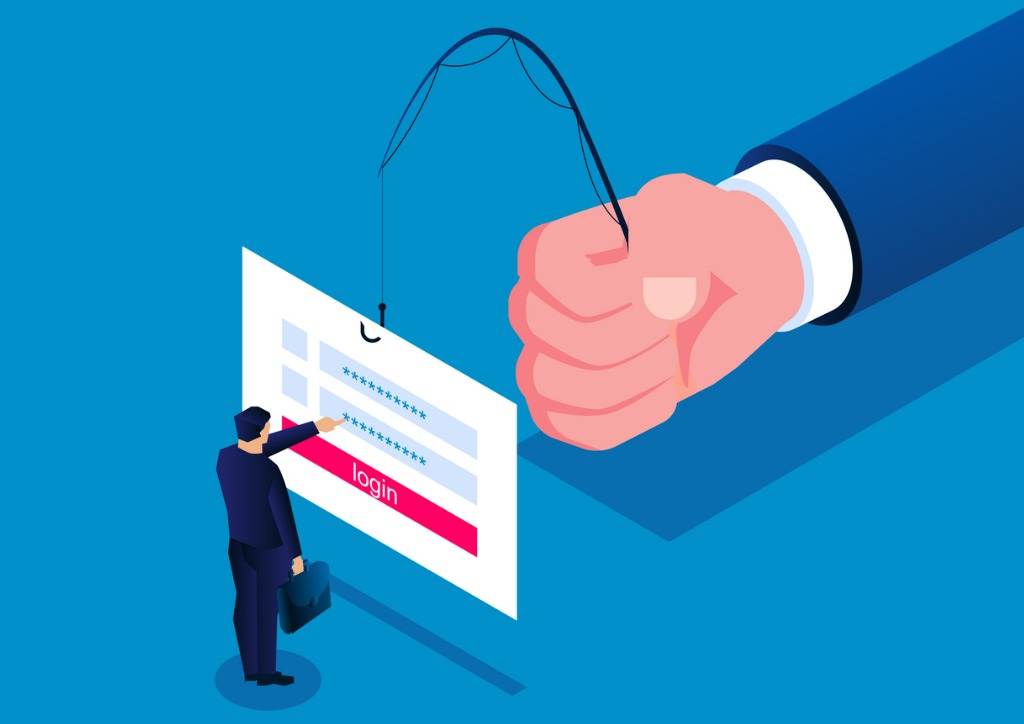
Satya then briefly touched on the following quick hits before transitioning to AI:
- Microsoft Loop: Billed as the next big breakthrough in Microsoft 365, Loop is described as a portable “canvas” for planning and collaboration. It can be used to co-create projects and can house and organize data from other Microsoft 365 apps while syncing across devices. Learn more about Microsoft Loop here.
- Microsoft Customer Experience Platform: This platform is designed to put organizations in complete control of their own customer data. The core idea is for companies to have autonomy over their data estate and how it’s being used. More on that here.
- New Azure Arc updates: Arc extends Azure security, governance, dev tools, and managed Azure services to any infrastructure. Now, it’ll be getting deeper support for VMware vSphere, new integrations with Azure Stack HCI, and Arc-enabled data services enhancements.
- Power Platform updates: These included pro developer updates, deeper integration with Microsoft Teams, process mining, and Power Fx open source capabilities.
- Defender for Cloud: An end-to-end solution that spans all clouds and platforms. Learn more here.
AI
Satya then transitioned into how Microsoft is taking AI breakthroughs and translating them into AI-infused solutions for users (e.g. AI-powered customer service agents and AI-powered smart search).
He highlighted their work on the Megatron-Turing NLG model with NVIDIA and their work on the Z-code multilingual model where individual languages can learn from each other. Advancements like those translate to Microsoft’s advances in speech transcription, speech translation in apps like PowerPoint, and offering more language support than ever before in Microsoft Translator.
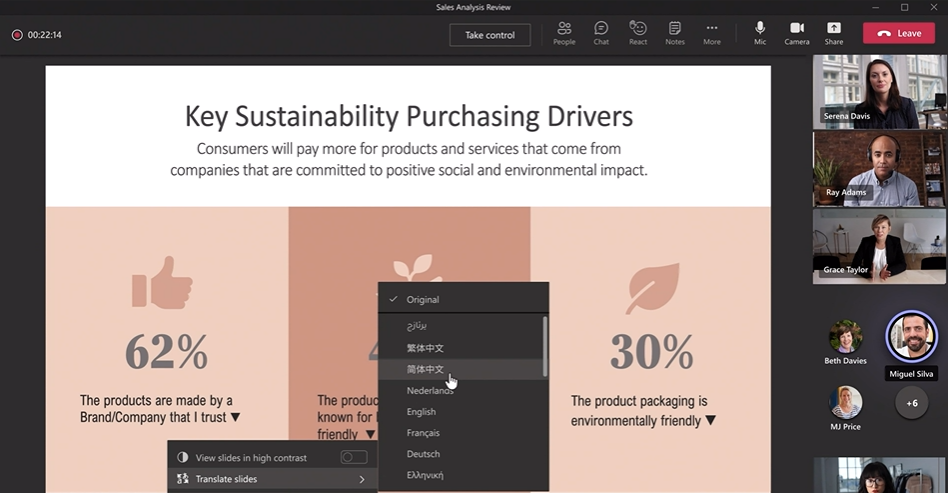
The most significant AI announcement, though, was Azure OpenAI Service. This new Azure cognitive service brings the power of GPT3 together with the enterprise capabilities of Azure. Product Marketing Manager Trang Le demonstrated what this could do with the Github Copilot plugin, which can synthesize code by intelligently interpreting context across comments and the code itself. Interestingly, Azure OpenAI Service can even do things like condense text summaries of events into blog posts. More on the capabilities of Copilot here.
Teams Connect
The next major beat Satya hit was Teams Connect, something that was announced at Microsoft Inspire earlier this year. With Teams Connect, the vision is for people to be able to seamlessly work across organizations via one central Team without having to rely on legacy tools like email. All of this is managed by Microsoft’s identity platform so only those who should have access can gain it.
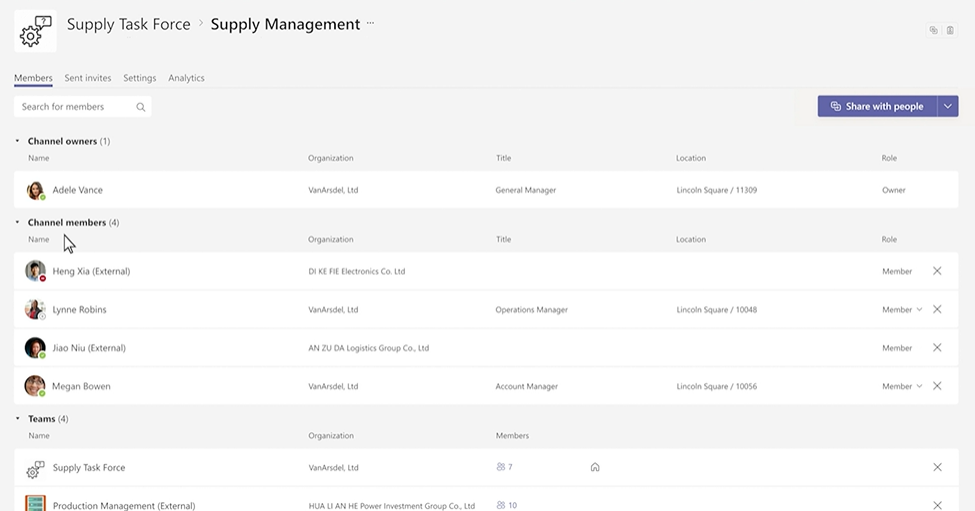
This is a game-changer, as employees from different orgs will be able to converse and share files just as securely as if they were in the same company. Live translation also makes it easy for companies in different parts of the world to work on projects together. Perhaps even more impressive, real-time co-authoring and @mentioning of collaborators is available on encrypted documents without the need to swap tenants.
The Metaverse
The metaverse has been a hot topic in the tech community recently, and it seems as though it’s top of mind for Microsoft as well. Declaring that Microsoft is bringing people and places together in both consumer and enterprise spaces, Satya’s first metaverse-related announcement was Dynamics 365 Connected Spaces. With Connected Spaces you can do analytics, get real-time insights, run simulations, and more to optimize the ways people move and interact in physical spaces. for more on Dynamics 365 Connected Spaces click here.
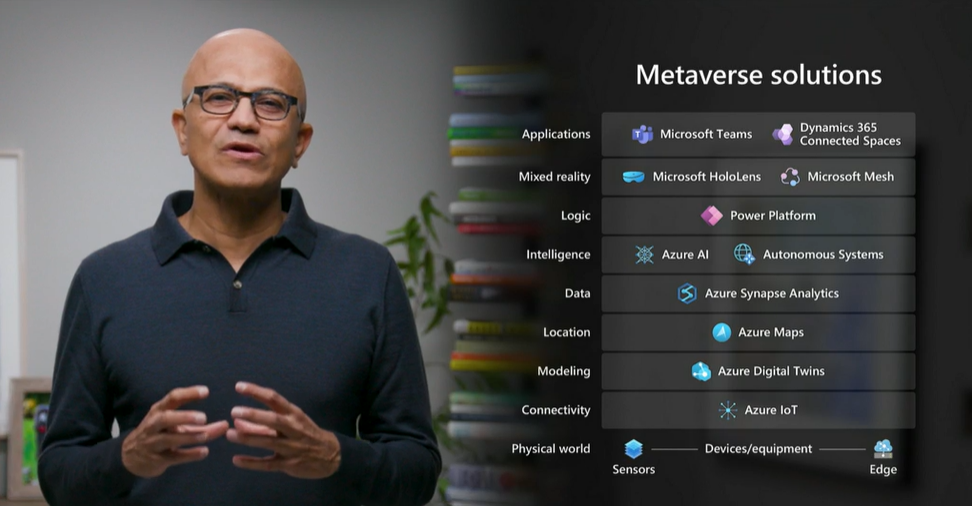
From Azure IoT to connected spaces and Microsoft Mesh, Satya doubled down on Microsoft’s commitment to establishing a foundation for the metaverse in their ecosystem. He outlined clear benefits such as being able to be on a factory floor instead of looking at one through a camera, and being in a game world with friends instead of simply playing the game (something he recently touched on re: Minecraft and Microsoft Flight Simulator). The next big breakthrough? Being able to have meetings “together” without being in the same room.
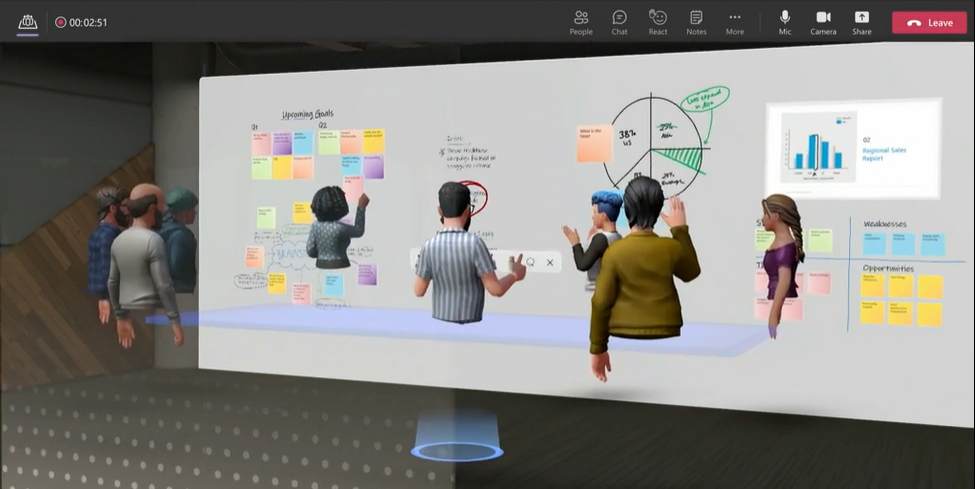
Mesh for Microsoft Teams
This dovetailed into a demo of Mesh for Microsoft Teams, an immersive VR-like way for employees to work in a metaverse office environment without ever having to leave their homes. Accenture highlighted the technology’s usefulness for onboarding new employees and helping current employees who get socially drained from being on camera all day. Personalized avatars allow users to keep their identities intact while native Microsoft 365 integration ensures workflows remain seamless.

